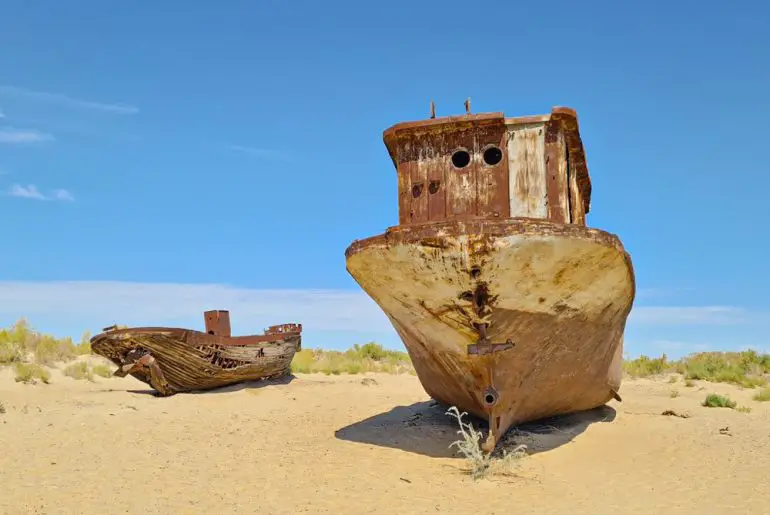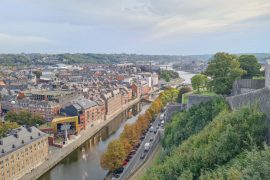Last Updated on 05.11.2023 by Iliyan
Did you know there is a sea that disappeared? In Uzbekistan and Kazakhstan there is a sea called Aral Sea. Actually, the Aral Sea was not an actual sea, it was once the world’s fourth-largest lake with an area of 68,000 square kilometers. The Aral Sea disaster began in the 1960s. The Soviets used the waters of two rivers – Amu Darya and Syr Darya to supply the region’s growing cotton production. That action dried up the sea and affected millions of people living in the Aral Sea basin. In this post you will learn more about this disaster during our day trip from Khiva to Aral Sea Ship Graveyard. It is a very interesting long journey, because the distance is around 800 km. roundtrip. The trip takes 14-15 hours depending on how long you stay at each stop.
Contents
Getting to Aral Sea Ship Graveyard
The easiest way to get from Khiva to Aral Sea Ship Graveyard is to hire a tour driver for the day. We were 3 people and booked our tour through Islambek Travel in Khiva. They offer many various tours from Khiva, so you have options to find the best one. Prices vary as they depend on the car and the number of people.
Stops during the day trip from Khiva to Aral Sea Ship Graveyard
Chilpik Kala
Chilpik Kala was the first stop during our day tour from Khiva to Aral Sea. It is a two-hour drive from Khiva. There are concrete steps that lead you up to the side of the structure. We stayed on the top around 20-25 minutes and I think that is pretty enough time. Chilpik Kala offers an excellent view of the Amu Darya River and the beautiful landscape.
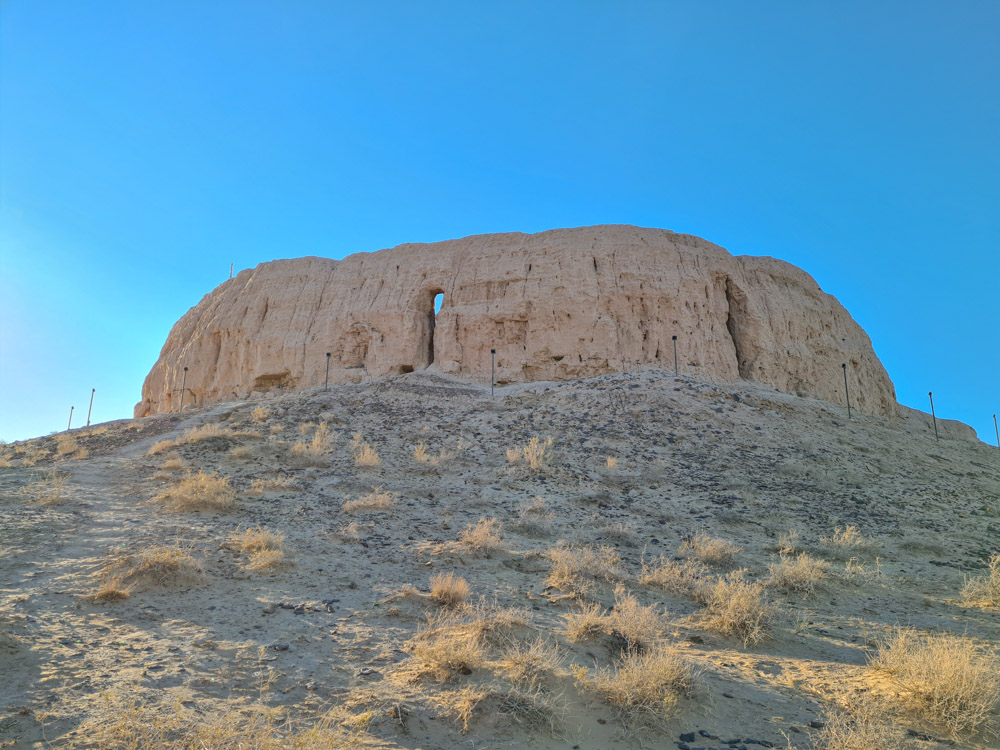
Chilpik Kala is located on the banks of Amu Darya River and it is one of the famous archaeological monuments in Karakalpakstan. In ancient times it served as a Zoroastrian monument and as a signal tower after the conquest of the Khorezm state by the Arabs. In the second half of the 1st century BC, a circular shaped enclosure was constructed on the top of the hill, 65 meters in diameter.
Zoroastrians used to put the bodies of deceased people here. The dead bodies were exposed to the birds and to the sun until the bones became clear from flesh. The family of the dead person collected the bones and put them in ceramic or stone urns for burial. This tradition was associated with Zoroastrian philosophy, the purpose of which was not to pollute the earth with the remains of the deceased.
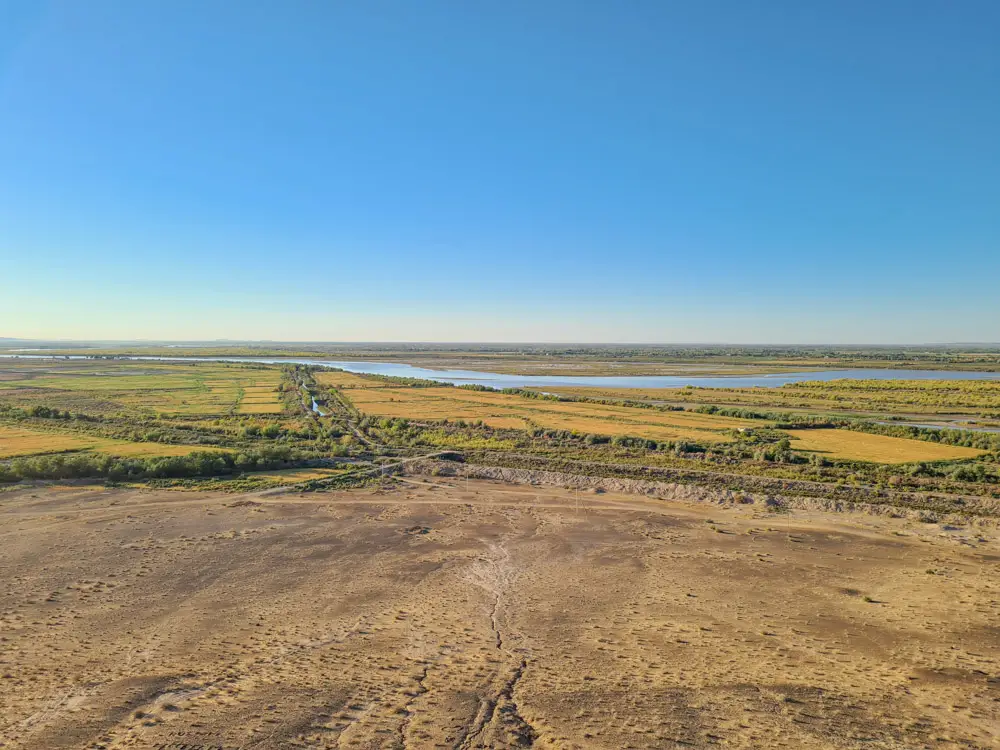
Chilpyk served as an observation and signal tower, and was used until the Mongol invasion in the early XIII century.
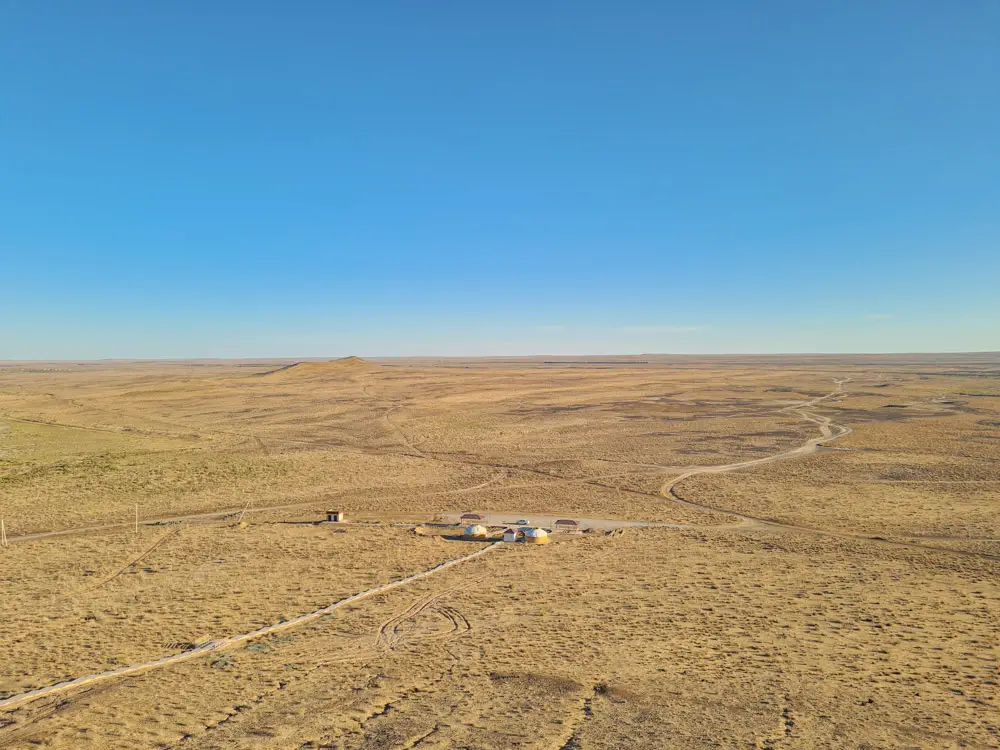
In addition, the ancient Zoroastrian fortress of Chilpyk appears in the national emblem of the republic of Karakalpakstan.
Mizdakhan Necropolis
Mizdakhan Necropolis was the second place we stopped on the way to the Aral Sea ship graveyard. It is a large hillside graveyard established in the ancient times and reoccupied extensively in the medieval period, up to the 14th century. The various monuments and old tombs are located on three small hills and the complex includes a citadel, an outer town and a necropolis. The oldest settlement was established around the 4th century.
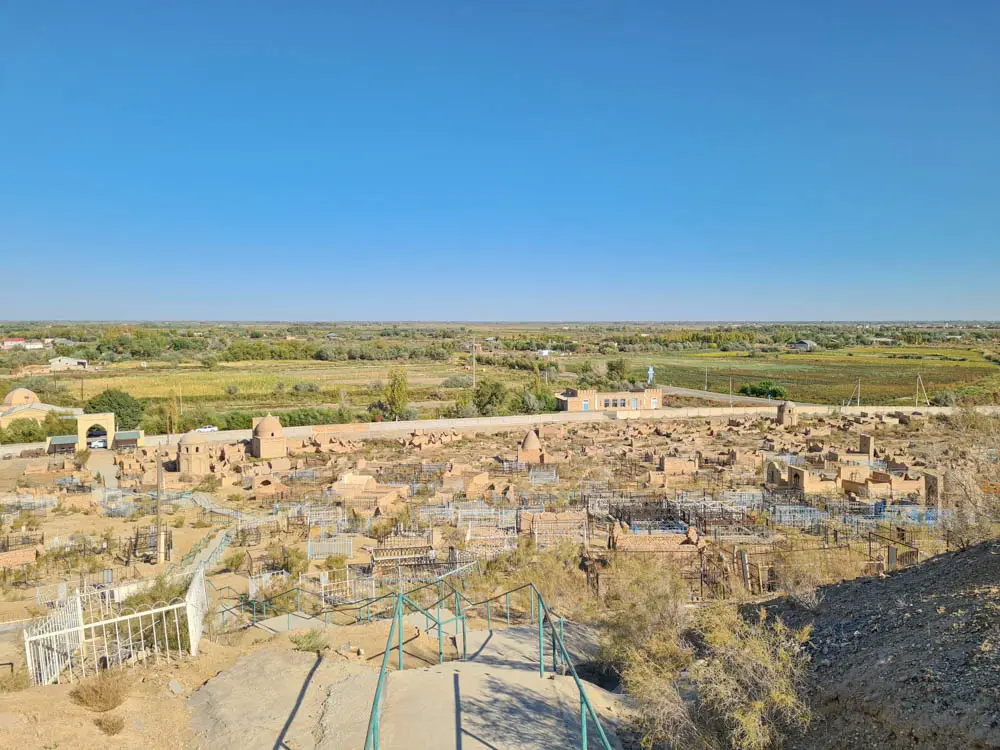
The Mausoleum of Mazlum Khan Sulu
The Mausoleum of Mazlum Khan Sulu is not imposing from the outside but has fine decorated underground chambers. The building is covered with turquoise blue tiles embedded into the mud-brick walls.
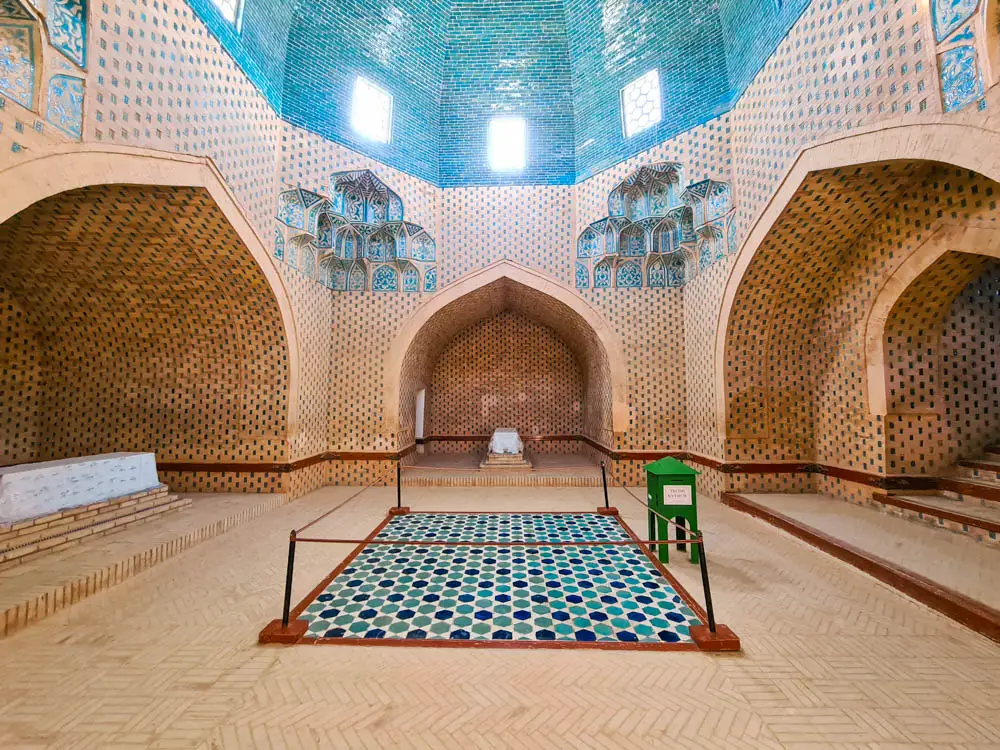
Shamun Nabi Mausoleum
The mausoleum of Shamun Nabi has rectangular-shaped construction and room, covered with 7 successively placed domes. Inside there is a huge tomb with a width of 1.40 m and 30 meters in length.
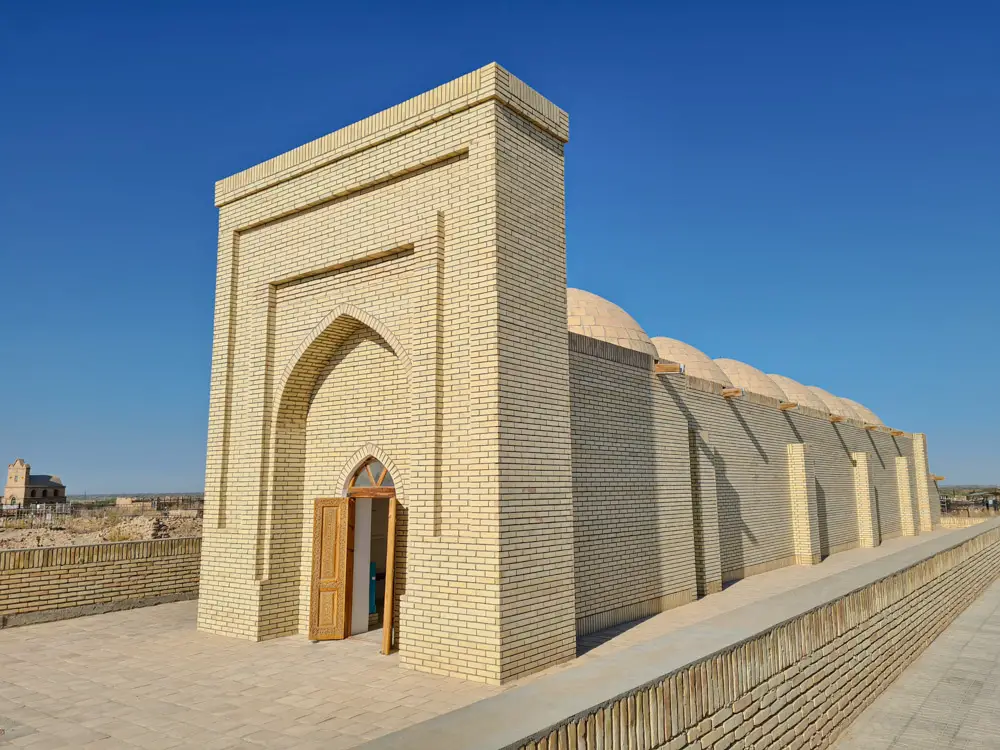
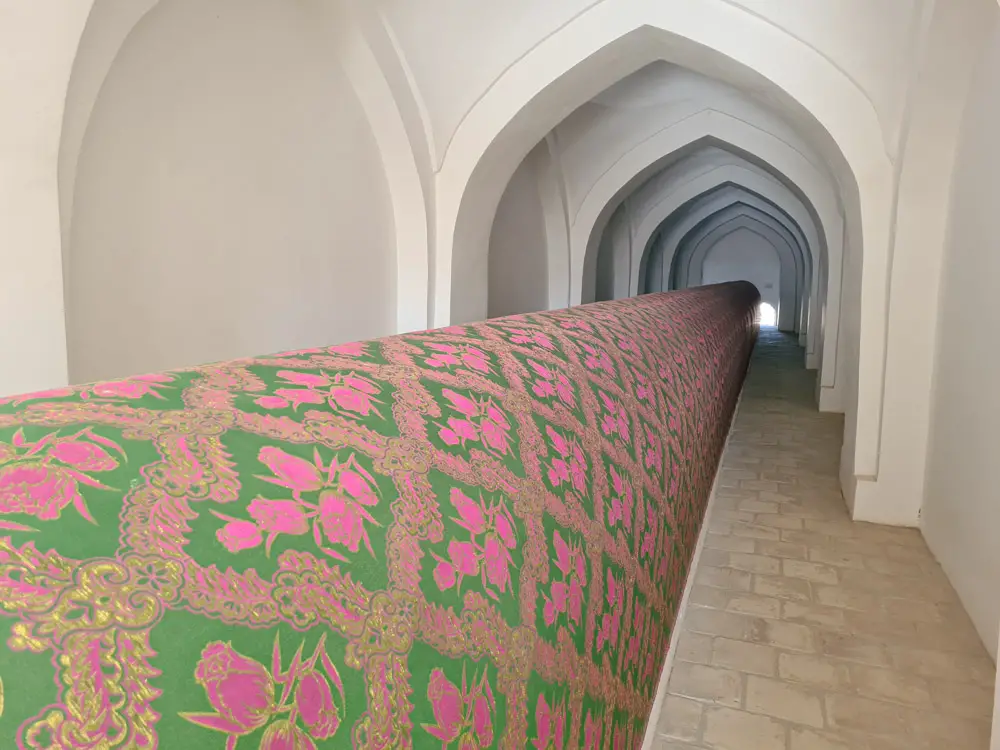
Gyaur-kala
The last landmark in Mizdakhan is Gyaur-kala which is situated close to the Mizdakhan Necropolis. Gyaur-kala has been a large centre of commerce and craft, not far from the Great Silk Road. According to Russian archaeologist Sergey Tolstov this place is one of the birthplaces of Zoroastrianism.
The Regional History and Aral Sea Museum
The Muynak History Museum is located next to the Muynak Aral Ship Graveyard. This small museum has some interesting historical photos and stuffed animals. There is an interesting short documentary movie on the Aral Sea which you can view for a small cost.
Muynak Aral Sea Monument
The Aral Sea Monument is situated about 100 m from the Muynak Aral Sea Museum and was erected to mark the original coastline. It is intended to commemorate the greatest environmental catastrophe caused by humans on our planet.
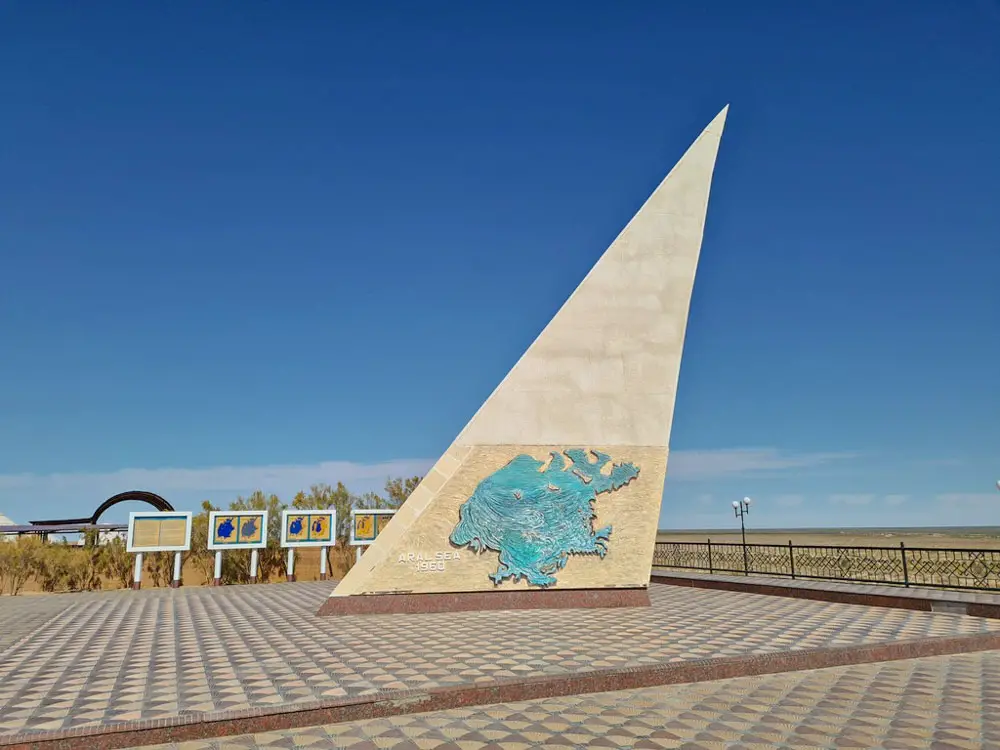
Muynak Aral Ship Graveyard
Muynak Aral Ship Graveyard was the final point on our day tour from Khiva to Aral Sea. It is located next to the Regional History and Aral Sea Museum.
Once the town of Muynak was a bustling fishing port, lying on the shores of the abundant Aral Sea. At the time, the Aral Sea was the 4th largest inland salt sea in the world. However, in the 1960s, the Soviet government ordered that the Amu Darya and Syr Darya rivers be diverted to irrigate land with the cotton plantations. This caused the Aral Sea to evaporate and left the remaining water with extremely high levels of salinity, which made it toxic, and later dried up into a dusty desert.
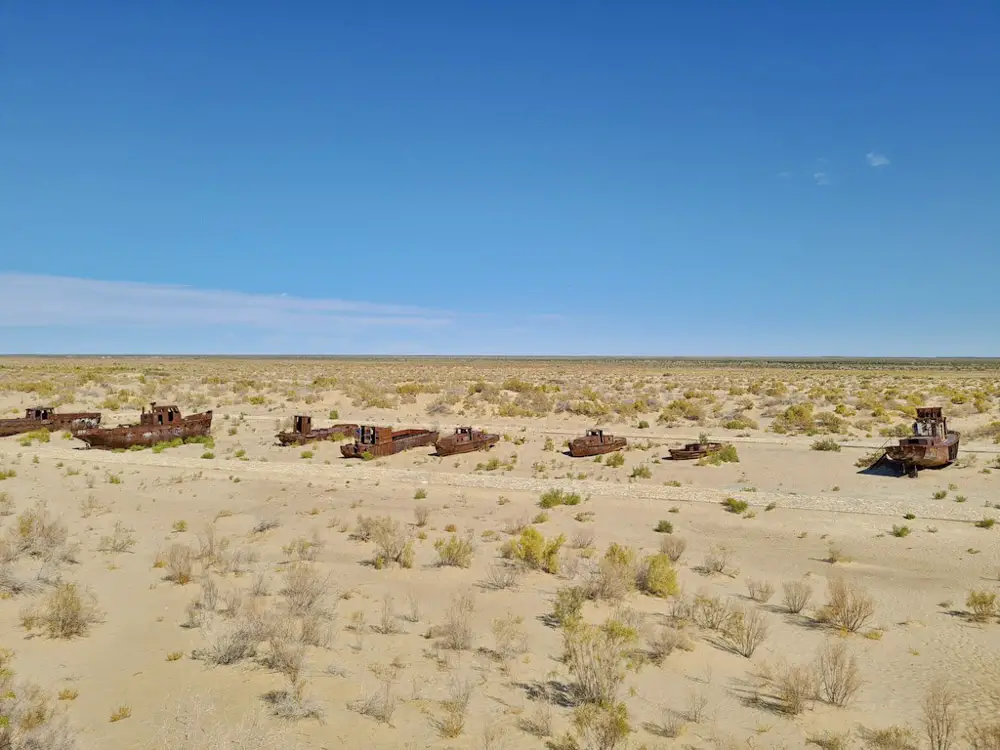
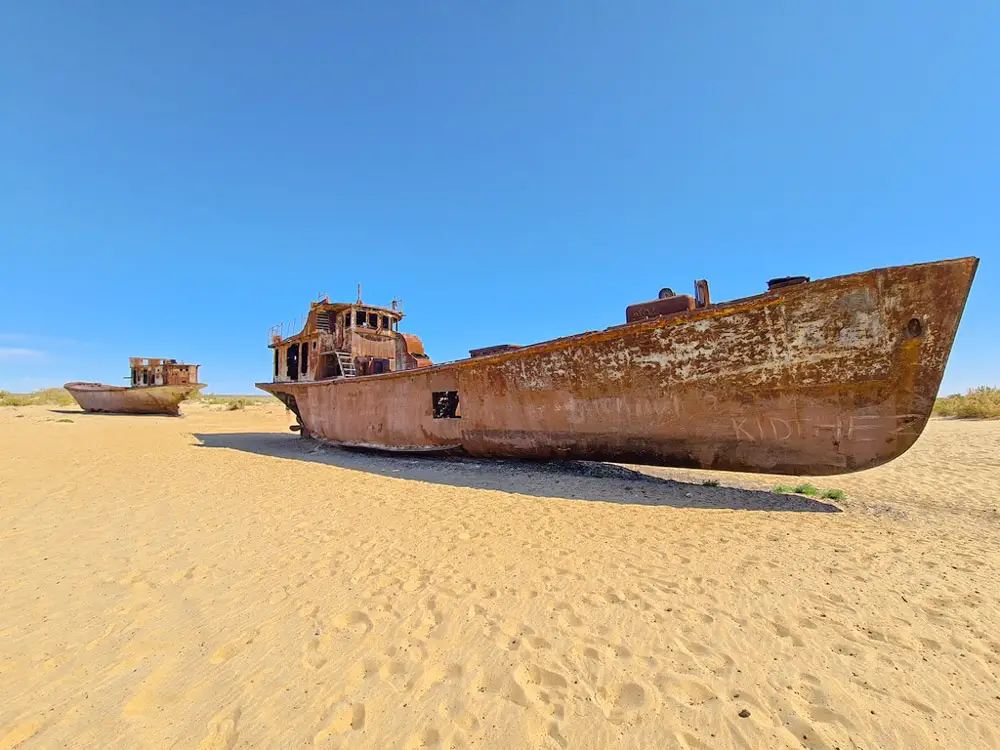
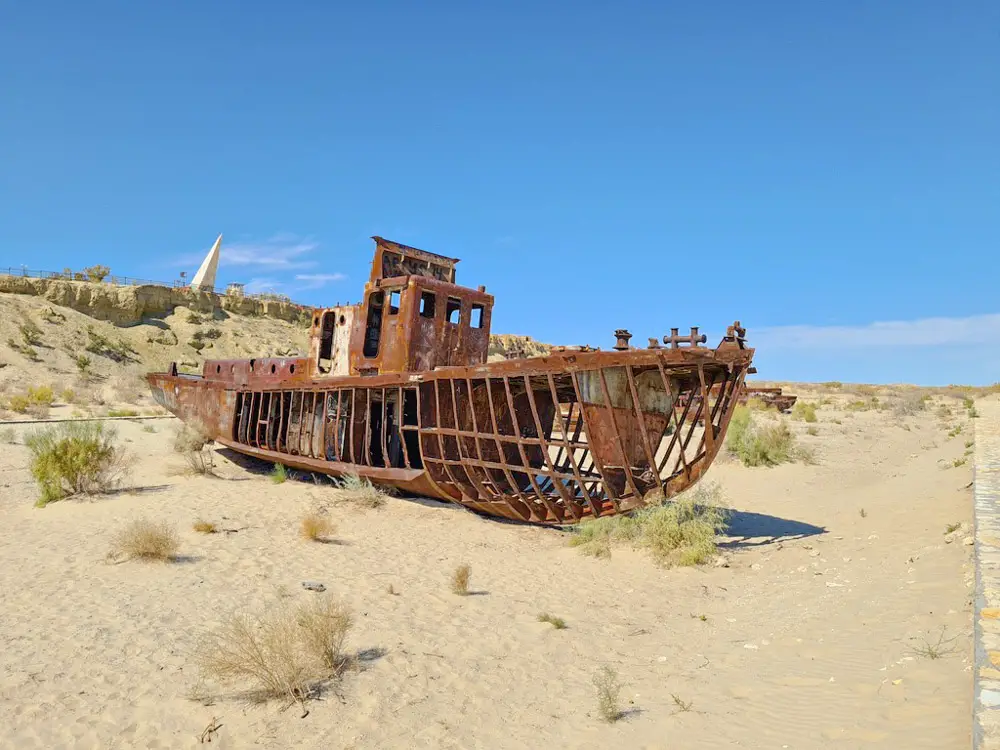
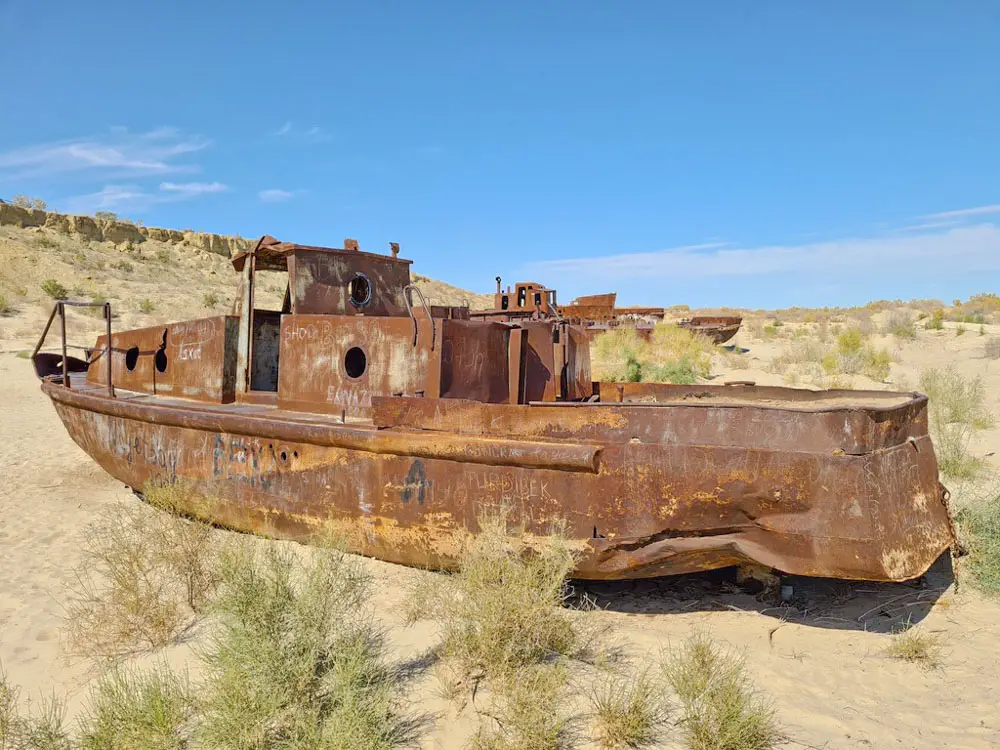
Muynak Aral Ship Graveyard is a good example of how the disaster decimated not only the fishing industry but a whole ecosystem. Fishing boats were abandoned in the sand, business closed, and the locals had to relocate in order to find a better life.
The day trip from Khiva to Aral Sea in Karakalpakistan shows you the worst environmental disaster.
Want more help planning your trip to Uzbekistan? Check out the best things to do in Tashkent, Samarkand, Bukhara and Khiva.
